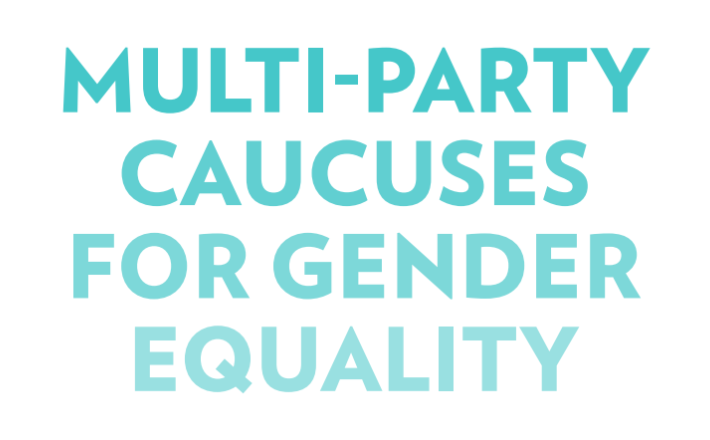Multi-party Caucuses for Gender Equality: A Handbook for Parliamentarians in Latin America and the Caribbean
Source: ParlAmericas
Parliamentary gender caucuses bring together legislators committed to advancing women’s rights and gender equality to coordinate their efforts and accelerate progress. There is no set form for these groups; rather, they should be designed to accomplish the specific goals of the individuals seeking to form the caucus, taking into consideration the national socio-political context.
Recognizing the potential these groups hold for achieving positive change, parliamentarians from Canada and five Caribbean countries— Antigua and Barbuda, the Bahamas, Grenada, Guyana, and Jamaica—gathered in Ottawa, Canada, in October of 2016 to participate in a two-day ParlAmericas meeting on creating multiparty parliamentary caucuses for gender equality. The meeting was facilitated by international expert in gender sensitive parliaments, Dr. Sonia Palmieri.
This handbook was inspired by that meeting and has been created to assist other parliamentarians in efforts to establish or strengthen these caucuses. The handbook has three sections. The first outlines five key considerations to address when designing a gender caucus. Accompanying these considerations are questions to prompt discussion with potential caucus members, as well as recommended strategies to help ensure success. The second section features three case studies of gender caucuses from across the hemisphere to showcase the different forms these groups can take. The final page suggests additional resources that can help support the creation of a gender caucus.
Click here to read the handbook.
[[{"fid":"12865","view_mode":"media_original","fields":{"format":"media_original","field_file_image_alt_text[und][0][value]":false,"field_file_image_title_text[und][0][value]":false},"type":"media","field_deltas":{"2":{"format":"media_original","field_file_image_alt_text[und][0][value]":false,"field_file_image_title_text[und][0][value]":false}},"link_text":null,"attributes":{"class":"media-element file-media-original","data-delta":"2"}}]]
[[{"fid":"12863","view_mode":"default","fields":{"format":"default","field_file_image_alt_text[und][0][value]":false,"field_file_image_title_text[und][0][value]":false},"type":"media","field_deltas":{"1":{"format":"default","field_file_image_alt_text[und][0][value]":false,"field_file_image_title_text[und][0][value]":false}},"link_text":null,"attributes":{"class":"media-element file-default","data-delta":"1"}}]]

Parliamentary gender caucuses bring together legislators committed to advancing women’s rights and gender equality to coordinate their efforts and accelerate progress. There is no set form for these groups; rather, they should be designed to accomplish the specific goals of the individuals seeking to form the caucus, taking into consideration the national socio-political context.
Recognizing the potential these groups hold for achieving positive change, parliamentarians from Canada and five Caribbean countries— Antigua and Barbuda, the Bahamas, Grenada, Guyana, and Jamaica—gathered in Ottawa, Canada, in October of 2016 to participate in a two-day ParlAmericas meeting on creating multiparty parliamentary caucuses for gender equality. The meeting was facilitated by international expert in gender sensitive parliaments, Dr. Sonia Palmieri.
This handbook was inspired by that meeting and has been created to assist other parliamentarians in efforts to establish or strengthen these caucuses. The handbook has three sections. The first outlines five key considerations to address when designing a gender caucus. Accompanying these considerations are questions to prompt discussion with potential caucus members, as well as recommended strategies to help ensure success. The second section features three case studies of gender caucuses from across the hemisphere to showcase the different forms these groups can take. The final page suggests additional resources that can help support the creation of a gender caucus.
Click here to read the handbook.
[[{"fid":"12865","view_mode":"media_original","fields":{"format":"media_original","field_file_image_alt_text[und][0][value]":false,"field_file_image_title_text[und][0][value]":false},"type":"media","field_deltas":{"2":{"format":"media_original","field_file_image_alt_text[und][0][value]":false,"field_file_image_title_text[und][0][value]":false}},"link_text":null,"attributes":{"class":"media-element file-media-original","data-delta":"2"}}]]
[[{"fid":"12863","view_mode":"default","fields":{"format":"default","field_file_image_alt_text[und][0][value]":false,"field_file_image_title_text[und][0][value]":false},"type":"media","field_deltas":{"1":{"format":"default","field_file_image_alt_text[und][0][value]":false,"field_file_image_title_text[und][0][value]":false}},"link_text":null,"attributes":{"class":"media-element file-default","data-delta":"1"}}]]